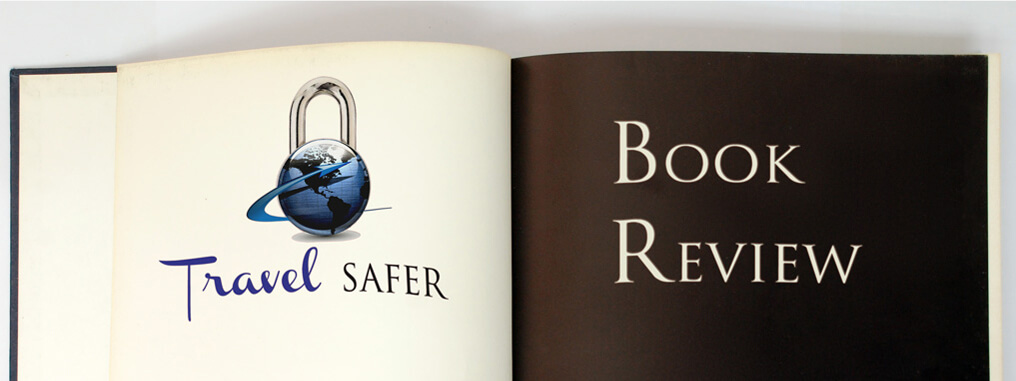For the student or business traveler, not understanding body language can mean misinterpreting the intention of a “friend,” potential suitor or investor – especially if you are not familiar with the local culture, its nuances, or do not speak the local language.
Author Joe Navarro is an expert in nonverbal communications, facial expressions, gestures, physical movements, haptics, kinesics, proxemics; which he honed during a 25-year career in the FBI. He then took those skills to the corporate world as a consultant.
Is it really like on T.V.?
Body language is not what most think or how T.V. portrays it. I would say that Lie To Me (Season 1… and part of season 2) is the one show that re-calibrates the discipline for the average viewer.
Picture this…
To best highlight the normal impression of how this works, I first must go into a recent experience:
 The moisture was present on the cold concrete walls of the interrogation room; in noir-detective style, the bare bulb swung slightly from the ceiling, creating a lazily moving shadow across the room.
The moisture was present on the cold concrete walls of the interrogation room; in noir-detective style, the bare bulb swung slightly from the ceiling, creating a lazily moving shadow across the room.
“Where were you on the night of…”
The detective keys in for the micro-gestures on the face of the detainee. A quick glance up and to the left.
“Gotcha! Cuff this man, he’s guilty.”
So… this may have actually not happened exactly that way… or at all.
What Joe reveals:
We all can do it
Reading body language is an inherent survival skill that we choose to neglect, similar to the fear instinct, which we push down to adhere to social norms (See book review: The Gift Of Fear). We learn to read facial expressions and body language as a child because we have to, so even if we gravitate away from it as we grow older, it is still a part of us from back to the caveman times.
For this to work, you have to go deeper
The art of reading body language is more than catching a cheating spouse by watching which direction his eyes go when you ask leading questions. If that’s the case, you’re creating an unfair trap for them and if you’re already suspicious then maybe you should have a deep chat, or move on.
Reading body language is more about understanding what the individual in front of you is NOT saying. It’s a holistic picture formed by taking into account environmental conditions, stress and previous patterns displayed by an individual.
How does this help…
- the solo traveler interpret the intentions of a crowd or individual?
- the study abroad student avoid a potentially violent encounter?
- the business traveler who wants to close the deal?
In any setting where you are not a native speaker, you are at a disadvantage when it comes to communication.
As a student, studies have shown (StudyAbroad_Sexual_Assault) that students who engage in risky behavior or make poor decisions are a result of a lack of social network where they are studying. If one is overly eager to make a connection with a local, it may not be verbally obvious to the non-native speaker when a nuance or slip betrays the potential attacker’s true intentions; understanding the body language can go a long way towards adding this dimension to your assessment, and, as a side note, is often more accurate than the verbal responses anyway.
If you’re traveling solo, listening to your intuition and recognizing body language will be your guide when accepting invitations to dinner, parties, etc.
Are you traveling for business? Reading body language can be the difference between going home empty handed and with a major deal in the bag.
Test the system
 So… what am I looking for?
So… what am I looking for?
Joe suggests establishing a baseline of what’s normal and then finding clues that the subject is operating outside of those norms – this is where you will know that something is amiss.
Ask these two questions:
- What did you do last weekend?
- What is your ideal (vacation, weekend, date, etc.?)
As they are answering these questions, track their posture, eye movement, and facial gestures. You are creating your baseline. Question one will show you their baseline for recall; question two is the baseline for imagination or inventing details.
Wait – what? Why?
Well, if your goal is to uncover when someone is less than truthful, what you REALLY want to know is: Is this person making sh*t up? It’s like poker: by finding their “tells,” you can identify when the individual is inventing the story; i.e., making it up; i.e., lying.
While this is an oversimplification of the larger discipline, it is the nugget at the core of the skill.
Extra bonus
In the conference or classroom:
Want to know what someone really thinks of your presentation? Watch their posture or gestures. Folded arms can indicate a closed off mindset or resistance to what it is you’re saying. Your task is to get them to unfold their arms – try handing them something, or writing something down.
Consider the culture
As a side note, the culture will pay a significant role in what to look for when taking the temperature of a potential client. Before you travel, take a culture profile assessment for yourself and the country you’re visiting to understand the differences. I also highly recommend reading up on the cultural norms to avoid offending anyone with a gesture or socially inappropriate behavior.
You can take the assessment here.
I also suggest reading Kiss, Bow, or Shake Hands – check out “The Library” for links to other great travel resources.
Now that you are armed with this information and ability, you must promise to use your powers for good.
No really, promise. I’m waiting. *Cue devious background laughter*


